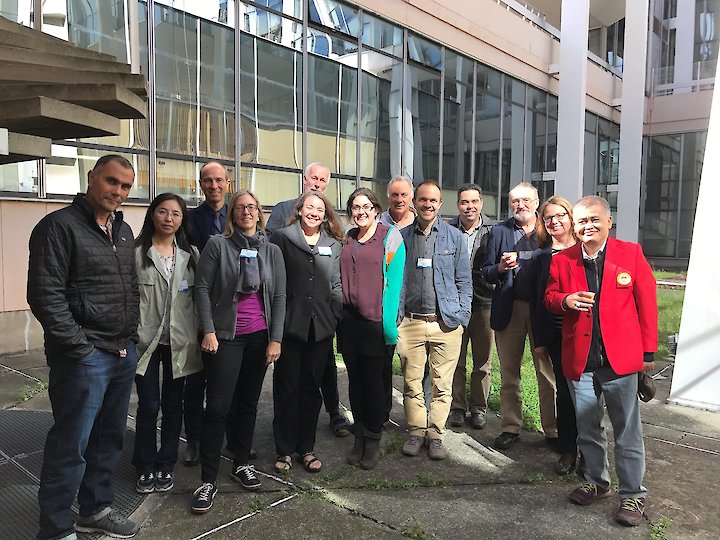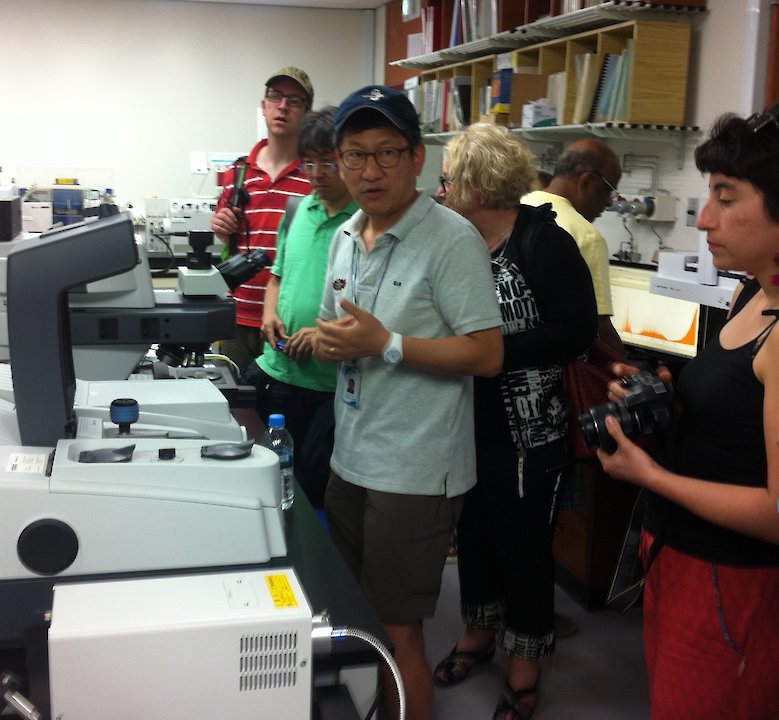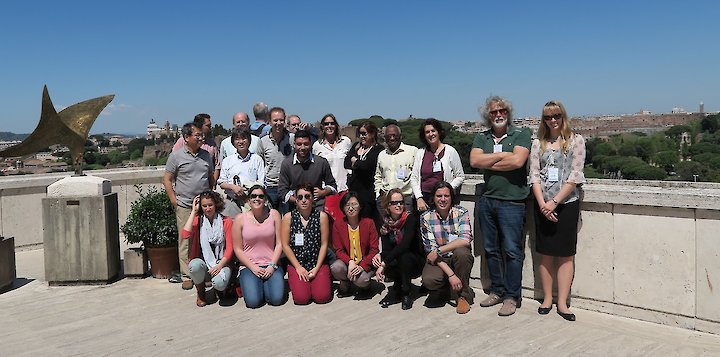Lead agency: Intergovernmental Oceanographic Commission (UNESCO-IOC) and United Nations Environment Programme (UNEP)
Background
It is widely recognised that marine litter can have significant ecological, social and economic impacts. Plastics form a large proportion of marine litter, and the widespread occurrence of macroscopic plastic debris and the direct impact this can have both on marine fauna and legitimate uses of the environment, sometimes remote from industrial or urban sources, has been well documented. Plastic debris comes in a wide variety of sizes and compositions and has been found throughout the world ocean, carried by ocean currents and biological vectors (e.g. stomach contents of fish, mammals and birds). Plastics degrade extremely slowly in the open ocean, partly due to UV absorption by seawater and relatively low temperatures. In recent years the existence of micro-plastics and their potential impact has received increasing attention. The extent of the impact of plastic litter in the oceans is uncertain, despite the considerable scientific effort that has been expended in recent years.
The work programme and terms of reference (ToRs) of WG 40 have evolved as a consequence of increasing knowledge and the developing policy and governance landscape (Table 1). The scope was increased to include all forms of marine plastic litter and this was reflected in the 2019 report on monitoring and assessment methods. The current ToRs represent the fourth phase of WG 40's activities with a focus on risk assessment. The current co-chairs are Peter Kershaw (since 2012, independent, United Kingdom) and Bethanie Carney-Almroth (since 2021, University of Göteborg, Sweden). The membership of WG 40 has varied since 2012, reflecting the changing ToRs and expertise required. In addition, greater attention has been paid in recent years to improve geographical representation and ensure a balance of gender and participation from countries at different stages of economic development, including SIDS. This should help in making sure the assessment and recommendations from WG 40 are relevant to the widest audience.
Current Focus of WG 40, fourth phase: 2021- to present
The current focus of WG40 reflects the acceptance that interventions intended to reduce the impact of marine litter and microplastics should be evidence-based and take account of the probable risks of not intervening. Marine litter encompasses a host of different categories of composition and intended use. The potential risks cover social, economic and environmental impacts. On a geographic scale the impacts may range of very local to global in extent. Risks may be to individual organisms or to whole ecosystems, and include risks to human health. This presents a challenge and it is not useful to attempt to devise a single risk assessment method that can be applied in all situations. Instead, each type of risk needs to be recognised and methods utilised that are appropriate for the particulars of each situation. The degree of flexibility can be accommodated withing a risk assessment framework, in effect providing a ‘toolbox’ of approaches and techniques. It is intended that the risk assessment framework will form part of Action Track One on science-policy linkages, one of five Action Tracks of the Global Partnership on Marine Litter[1].
Terms of reference (ToRs) for 4th phase of WG 40[1]:
(ToRs 1 - 5 to include social, environmental and economic aspects)
- Review and further development risk assessment methods for marine litter and microplastics and identify data needs – based on the outcome of the 2019 GESAMP risk workshop;
- Assess the effects of marine litter and macro-plastics – e.g. human wellbeing, biodiversity and animal welfare, food security, direct and indirect cost to different sector, risk perception and communication;
- Assess the effects of nano and micro-plastics – e.g. chemical contaminants, biodiversity, human health, risk perception and communication;
- Assess the effects of transfer of biota – e.g. human welfare, biodiversity, direct and indirect costs, pathogens, risk perception and communication; and,
- Carry out initial risk assessment (based on ToRs 1-4).
WG 40 held a face-to-face workshop in Busan, Republic of Korea, in September 2022 and currently preparing an interim report. It is hoped to hold a second workshop later in 2023 to complete the initial version of the framework. This will allow the wider scientific and ocean policy communities an opportunity to contribute to the development of a robust approach to risk assessment, that can be applied in a wide variety of social, economic and environmental settings.
Outputs: (4th Phase, 2019 onwards)
-
Report: Proceedings of the GESAMP International Workshop on assessing the risks associated with plastics and microplastics in the marine environment, 21-23 May 2019, Geneva (published February 2020
WG 40 was initiated in 2012, as a consequence of the GESAMP emerging issues programme. Details of its development, aims and outcomes are summarised in the History of WG 40 section below.
History of WG40:
The question of the degree to which micro-plastics and associated chemical loads present a risk to organisms was raised through the GESAMP emerging issues programme. Following the preparation of a scoping paper in 2009, a Workshop was held in June 2010, hosted by UNESCO-IOC in Paris, bringing together experts from industry, academia, NGOs and policy making to examine plastic particles as a vector in transporting persistent, bio-accumulating and toxic substances in the oceans. The proceedings of this Workshop were subsequently published as GESAMP Reports and Studies No. 82 in 2010.
One of the recommendations was that GESAMP should create a new working group: ‘Sources, fate and effects of miroplastics in the marine environment - a global assessment.’ WG40 was formed in 2012, with IOC as the lead agency and with additional in-kind or financial support from IMO, UN Environment Programme, the NOAA, Plastics Europe and the American Chemistry Council.
First Phase: 2012 - 2014
The initial Terms of Reference:
- Assess inputs of micro-plastic particles (e.g. resin pellets, abrasives, personal care products) and macro-plastics (including main polymer types) into the ocean; to include pathways, developing methodologies, using monitoring data, identifying proxies (e.g. population centres, shipping routes, tourism revenues);
- Assess modelling of surface transport, distribution and areas of accumulation of plastic and micro-plastics, over a range of space- and time-scales;
- Assess processes (Physical, chemical and biological) controlling behaviour and the rate of production of ‘secondary’ micro-plastic fragments;
- Assess long-term modelling including fragmentation, seabed and water column distribution, informed by the results of ToR 3;
- Assess uptake of particles and their contaminant/additive load by biota, as well as their physical and biological impacts at a population level; and
- Assess the social and economic aspects including public awareness.
WG40 workshops took place in Paris, London and Busan, in the Republic of Korea, attended by 16 members from 12 countries in North and South America, Africa, Asia and Europe.
Members of WG40 at the third workshop in Busan, July 2014: a) searching for micro-plastics on shoreline near Busan; b) touring the analytical facilities at the KIOST laboratory under the direction of Dr Won Joon Shim.
The first global assessment report was published in 2015 in the GESAMP Reports and Studies Series
In addition, a summary of the main conclusions and recommendations was published for policy makers and the lay readership.
The assessment made a number of recommendations for further investigation, which the group concluded was required to cover certain topics in greater depth or introduce new elements into the assessment. This led to the initiation of the second phase.
Second Phase: 2015 – 2016
A revised work programme was agreed for the second phase:
-
to carry out a comprehensive assessment of the topic with input from a wide range of disciplines over a 3-4 year timeline;
-
to provide input to the 2nd United Nations Environment Assembly (May 2016) on topics of particular interest to UN Environment and FAO.
Part (b) was initiated at the request of UN Environment, to contribute to a broader effort on the impact of plastics and marine plastics in the marine environment, in response to a Resolution passed at the inaugural United Nations Environment Assembly, which took place in Nairobi in 2014. The Resolution (1/6 Paragraph 14) required the Executive Director of UN Environment to carry out a study on ‘Marine plastic debris and microplastics’:
‘…… building on existing work and taking into account the most up-to-date studies and data, focusing on:
(a) Identification of the key sources of marine plastic debris and microplastics;
(b) Identification of possible measures and best available techniques and environmental practices to prevent the accumulation and minimize the level of microplastics in the marine environment;
(c) Recommendations for the most urgent actions;
(d) Specification of areas especially in need of more research, including key impacts on the environment and on human health;
(e) Any other relevant priority areas identified in the assessment of the Joint Group of Experts on the Scientific Aspects of Marine Environmental Protection;’
GESAMP was requested to carry out the microplastics aspects of the study with IOC-UNESCO and UN Environment sharing the lead agency role. The Terms of Reference of WG40 were revised and the membership of WG40 was refreshed and expanded accordingly, with generous financial support from the Government of Norway, administered by UN Environment.
Phase 2 Terms of Reference:
-
Assess the main sources and categories of plastics and microplastics entering the ocean.
-
Assess and utilize a range of physical and chemical models to simulate the behaviour of plastics and microplastics in the ocean in order to improve current assessment technologies.
-
Assess the occurrence and effects of microplastics in commercial fish and shellfish species, including associated additive chemicals and contaminants in the edible fractions.
-
Assess local, regional and global scales of accumulation of plastics and associated chemicals (additives and absorbed contaminants), including SIDS and regional hotspots.
-
Assess the effects of nano-sized plastics on marine organisms
-
Assess the risk of physical and chemical effects of ingested microplastics on marine organisms.
-
Assess the significance of plastics and microplastics as a vector for organisms, facilitating the spread of non-indigenous (alien) species.
-
Develop guidelines covering terminology and methodologies: i) size and shape definitions of particles; ii) sampling protocols for the whole spectrum of particle sizes in surface and sub-surface seawater, seabed sediments, shorelines and biota; and, iii) methodologies for physical and chemical identification and analysis of polymers and associated chemicals.
-
Assess social and economic aspects influencing both the entry of plastics/microplastics into the ocean and the potential consequences from the resulting contamination.
-
Develop and utilize effective mechanisms for communicating the progress and conclusions of the working group to a wide audience (public and private sector).
WG 40 workshops were held in Rome, Paris and Guayaquil (Ecuador), with contributions at various times from 25 invited experts representing 18 countries from North and South America, Africa, Asia, Australasia and Europe. Representatives from FAO, IOC and UN Environment took part, and ACC and Plastics Europe attended as Observers.
Members of WG40 Phase 2, enjoying the sunshine on the rooftop at FAO in Rome, April 2015.
The results of Phase 2 were published in 2016 in the GESAMO Reports and Studies Series, and represented a significant contribution to the Marine plastics and microplastics study, presented at UNEA-2 in May 2016 in Nairobi.
Third phase: 2017 - 2020
To develop guidelines covering terminology and methodologies for the sampling and analysis of marine macro-plastics and microplastics, including:
i) size and shape definitions of particles;
ii) sampling protocols for the whole spectrum of particle/object sizes in surface and sub-surface seawater, seabed sediments, shorelines and biota;
iii) methodologies for physical and chemical identification and analysis of polymers and associated chemicals;
iv) requirements for monitoring and assessment.
2. To assess the occurrence and effects of nano-sized plastics on marine organisms, and make research and policy-relevant recommendations.
3. To assess the significance of plastics and microplastics as a vector for indigenous and non-indigenous organisms, and make research and policy-relevant recommendations.
The focus in 2017–2018 was to develop guidelines covering terminology and methodologies for the sampling and analysis of marine macro-plastics and microplastics, more specifically: the size and shape definitions of particles; sampling protocols for the whole spectrum of particle/object sizes in surface and sub-surface seawater, seabed sediments, shorelines and biota; and, methodologies for physical and chemical identification and analysis of polymers and associated chemicals requirements for monitoring and assessment. It is considered essential to collaborate with a wide range of Regional Seas and other regional organisations, to ensure the guidelines are relevant for those organisations with responsibility for undertaking monitoring and assessment for plastics and microplastics. It is intended to publish the guidelines before the end of 2018.
The membership of the working group was refreshed to reflect the new objectives. The total membership was 15, with representatives from 14 countries in Africa, North and South America, Asia, Australasia and Europe. Two additional co-chairs have been appointed to cover the macro-plastic (Alexander Turra, Brazil) and microplastic (Francois Galgani, France) methods and protocols.
Additional financial and in-kind support to cover the 1st ToR has been agreed with: IMO; FAO; NOAA, USA (Marine Debris Program); Ministry of Environment, Japan (G7 Marine Litter Action Plan); State Ocean Administration, China (G20 Marine Litter Action Plan); the North West Pacific Action Plan (NOWPAP) (G7 – Regional Seas collaboration); and, the BASEMAN – JPI Oceans project (microplastics methods).
The first meeting of WG40 in phase three took place in Paris in September 2017. Further meetings of the working group were held during the 6th International Marine Debris Conference (6IMDC) San Diego, United States, in March 2018.
Table 1: A brief history of Working Group 40, showing how the main objectives have developed in response to a changing policy landscape and Member State needs.
|
Year |
GESAMP |
Science-based policy |
Support to Member States |
|
2008 - |
Microplastics as an emerging issue:
|
Emerging concern |
Minimal concern |
|
2012 - |
WG 40 Phase 1: Global assessment – sources, fate & effects |
Increasing concern UNEA-1 resolution (2014) |
Emerging concern |
|
2016 - |
Phase 2: Global assessment – sources, fate & effects |
UNEP 2016 report to UNEA-2 (2016) AHEG UNEA-3 (2017) |
Increasing concern Request for advice & support |
|
2018 - |
Phase 3: Guidelines for monitoring & assessment of marine litter & microplastics |
Need for harmonised monitoring & assessment - SDG 14.1.1, UNEA 4 (2019) |
Utilisation of Guidelines:
|
|
2021 - |
Phase 4: Risk assessment framework (social, economic & ecological risks from marine litter & microplastics |
Global plastics agreement - negotiation (UNEA-5, 2022 - ongoing) GPML Action Track 1 Science-policy (2021 - ongoing) |
Risk-based interventions |



